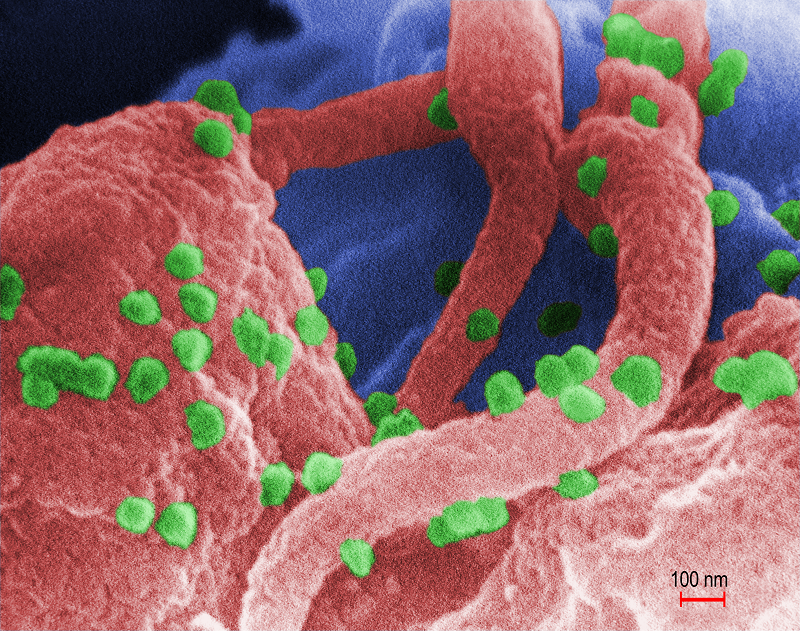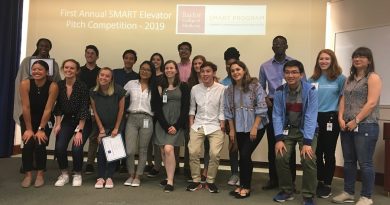Uncovering the secrets of the sooty mangabey’s resistance to SIV
Simian immunodeficiency virus (SIV) infection in macaques behaves in a similar way as infection by human immunodeficiency virus (HIV) in humans, progressing into acquired immunodeficiency syndrome (AIDS) over time. However, in sooty mangabeys, a primate species native to West Africa, SIV infection does not cause a disease.

“Primates are natural hosts for certain diseases, and sooty mangabeys in particular are natural hosts for SIV, meaning they can be naturally infected with the virus and sustain long-term infection without ever progressing to disease,” said Dr. Jeffrey Rogers, associate professor in the Human Genome Sequencing Center (HGSC) and the Department of Molecular and Human Genetics at Baylor.

Researchers from an international group of institutions, organized and led by Baylor College of Medicine and Emory University, set out to sequence and analyze the genomes of two nonhuman primates. They wanted to investigate the mechanisms that drive disease progression to develop new insights into the behavior of the HIV virus in humans.
Genome sequencing analysis provides answers
Researchers at the Yerkes National Primate Research Center, Emory University, led by Dr. Guido Silvestri, shared sooty mangabey samples with Rogers and his team at the HGSC to be sequenced and assembled. Once sequenced, the mangabey genome results were sent back to Emory for analysis, including direct comparison with the rhesus macaque and human genomes.
Rogers and colleagues at the HGSC, who have created de novo whole genome sequences and assemblies for multiple other nonhuman primates, conducted DNA- and RNA-sequencing and assembled the sooty mangabey genome. Together the BCM and Emory researchers were able to identify several key differences in genes related to the immune system in sooty mangabeys that have significant divergence from the equivalent genes of macaques or humans.

“We observed structural changes in the sooty mangabey intercellular adhesion molecule 2 (ICAM2) gene that are not found in other sequenced primates. ICAM2 is a glycoprotein that can be expressed on various immune cells,” explained Dr. Kim C Worley, professor in the HGSC at Baylor. “ICAM2 protein in the mangabeys is shorter, which results in a dramatic functional change causing it to no longer be expressed on the surface of those immune cells.”
“In particular, we found that a pattern recognition receptor called toll-like receptor 4 (TLR4) differs significantly in sooty mangabeys. TLR4 initiates pro-inflammatory processes in cells. The hyper-stimulation of immune function via TLR4 in macaques is one of the mechanisms believed to cause SIV-induced chronic inflammation and eventual immune dysfunction,” said Rogers.
These genomic differences suggest that sooty mangabeys are able to avoid SIV-induced disease progression due to specific genetic differences underlying their immune responses.
“This research gives us part, albeit an exciting one, of the answer as to how sooty mangabeys can avoid disease. We hope this leads to insights into new therapies and treatments in humans to fight HIV infection,” said Rogers.

“This is an example of how basic research in comparative primate genomics of other species can contribute hugely to biomedical research, questions in biology and numerous other diseases,” said Dr. Richard Gibbs, director and professor in the HGSC at Baylor. “This will be a continued effort to understand non-human primate genetics.”
Read all the details of this work and the list of all the contributors and their affiliations in the journal Nature.
The research was supported by the National Institute of Allergy and Infectious Diseases (R37AI66998), the National Human Genome Research Institute (U54HG006484) and NIH Director’s Office of Research Infrastructure Programs (P51OD011132, primate centers, and R24 OD010445).
-By Allison Mickey



